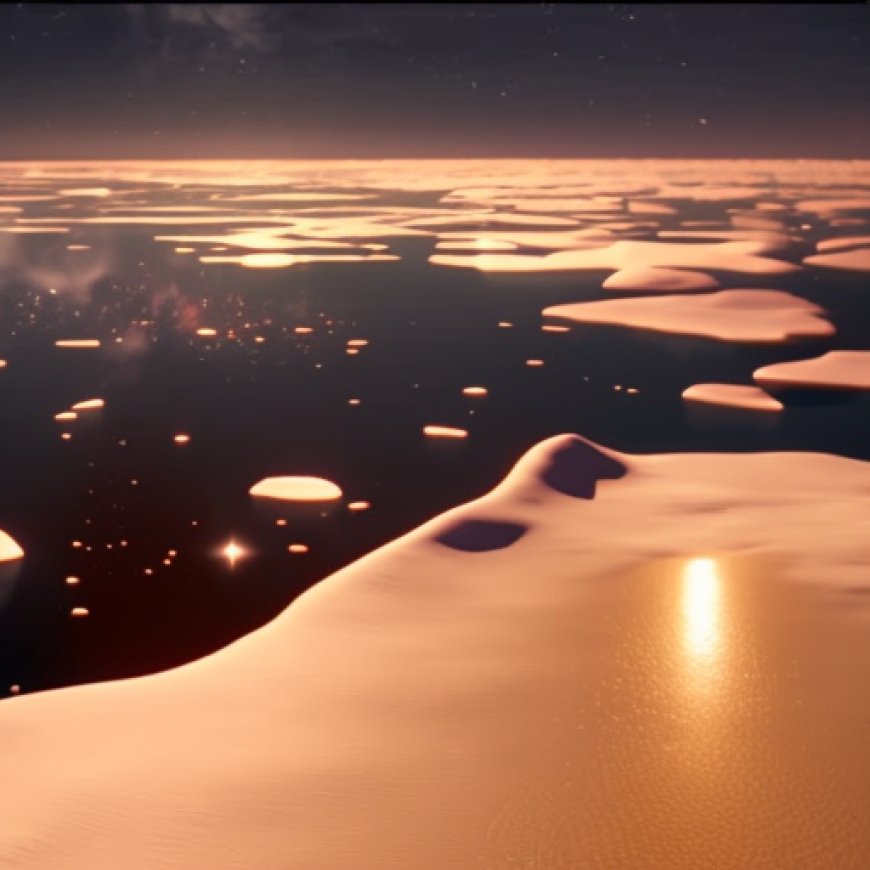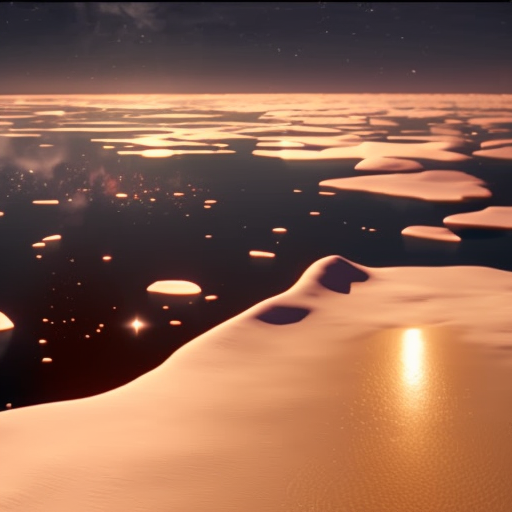Consequences of iceless Great Lakes still a mystery, scientists say
US Great Lakes ice hits record low: What does that mean for the world's largest freshwater system? Euronews


The Impact of Iceless Winters on the Great Lakes
The lakes hit their lowest ice cover in over 50 years last month, with experts warning that toxic algal blooms and lower fish stocks could follow.
Introduction
Biologists have been keeping tabs on a remote Lake Superior island’s fragile wolf population every winter since 1958. But they had to cut this season’s planned seven-week survey short after just a fortnight. The ski plane the Michigan Tech University researchers study the wolves from uses the frozen lake as a landing strip because there’s nowhere to touch down on the island. But this weirdly warm winter left the Great Lakes nearly devoid of ice.
Understanding the Impact
As climate change accelerates, scientists are scrambling to understand how iceless winters could affect the world’s largest freshwater system. Most of the effects are still theoretical since the lakes are generally too treacherous for data-gathering expeditions during the coldest months and biologists have long thought that little ecological activity takes place under the ice anyway. But they say the changes could have serious environmental, economic and cultural impacts, including by harming certain fish species, eroding beaches, fueling algae blooms and clogging shipping channels.
Great Lakes’ ice cover was only 3 per cent in February
The planet experienced record heat for an eighth-straight month in January, according to the European climate agency. The upper Midwest has been no exception, with Chicago experiencing temperatures of around 21 degrees Celsius late last month and Wisconsin getting its first February tornadoes. Ice coverage on the lakes, which have a combined surface area roughly the size of the UK, has generally peaked in mid-February over the last 50 years, with as much as 91 per cent of the lakes covered at times, according to the Great Lakes Ice Tracker website. As of mid-February this year, only 3 per cent of the lakes was covered, which was the lowest figure since at least 1973, when the site’s records begin.
Potential Changes in the Great Lakes
Researchers don’t have much data about how years of iceless winters could change the lakes, but they have plenty of theories. Iceless lakes could absorb sunlight faster and warm up sooner in the spring. Some biologists speculate that this could lead to earlier and larger blue-green algae blooms, which can be toxic to humans and put a damper on summer tourism. Without ice, the lakes’ upper levels will likely warm even more quickly than usual, contributing to thermal stratification, in which layers of colder and warmer water form. Less oxygen would make it into the lower, colder and denser levels, which could cause plankton and other organisms to die, some scientists believe. Whitefish and lake trout typically hatch in the spring and feed on plankton, so less plankton would likely cause fish populations to shrink, potentially leading to tighter fishing quotas and higher prices at grocery stores and restaurants. Less ice could translate to longer fishing seasons, but winter storms could wreck nets and traps and destroy whitefish eggs that rely on the ice for protection.
Impact on Fishers and Shipping
Charlie Henrikson runs a small commercial fishing operation off Wisconsin’s Door County peninsula. He says his boats have been setting nets in February when they typically don’t start the season until late March. He is most concerned about the lack of ice leading to more evaporation, which would cause lake levels to drop and make it harder to get his boats into port. Less ice also could lead to a longer lake shipping season. But without ice blanketing the lakes, powerful winter storms could erode shorelines more than usual, which could push more sediment into harbors and make them shallower and trickier to navigate.
Collecting Data in Sub-Zero Temperatures
This year’s lack of ice enabled Michigan Tech’s Vick-Majors to launch a project to gather winter-specific data that scientists can compare to summer data. Researchers from around the Great Lakes are participating in sampling this month. On a recent day, Madeline Magee and Rae-Ann Eifert, lake monitors for the Wisconsin Department of Natural Resources, braved sub-freezing temperatures to gather buckets of lake water off a Racine breakwater as part of Vick-Majors’ project. The lake was completely open, an emerald expanse stretching to the horizon, and the wind was howling. High swells pounded the beach and showered Eifert as she stood on the breakwater, leaving her ski trousers coated with beads of ice. Magee says the project is worth it. “Continuing the data collection moving forward will only further inform what we know about the Great Lakes and how we might be able to manage the lakes more efficiently,” she says. “If we lose ice cover, we really are changing the fundamental ecosystem of the Great Lakes in ways that we don’t really understand right now.”
SDGs, Targets, and Indicators
-
SDG 13: Climate Action
- Target 13.1: Strengthen resilience and adaptive capacity to climate-related hazards and natural disasters
- Target 13.2: Integrate climate change measures into national policies, strategies, and planning
- Indicator 13.1.1: Number of deaths, missing persons, and directly affected persons attributed to disasters per 100,000 population
- Indicator 13.2.1: Number of countries that have communicated the strengthening of institutional, systemic, and individual capacity-building to implement adaptation, mitigation, and technology transfer
-
SDG 14: Life Below Water
- Target 14.1: By 2025, prevent and significantly reduce marine pollution of all kinds, particularly from land-based activities, including marine debris and nutrient pollution
- Target 14.2: By 2020, sustainably manage and protect marine and coastal ecosystems to avoid significant adverse impacts, including by strengthening their resilience, and take action for their restoration in order to achieve healthy and productive oceans
- Indicator 14.1.1: Index of coastal eutrophication and floating plastic debris density
- Indicator 14.2.1: Proportion of national exclusive economic zones managed using ecosystem-based approaches
Analysis
The article discusses the impact of climate change on the Great Lakes and highlights the decrease in ice cover, which has various ecological, economic, and cultural implications. Based on the content of the article, the following SDGs, targets, and indicators can be identified:
1. SDG 13: Climate Action
The article directly addresses the issue of climate change and its impact on the Great Lakes. The decrease in ice cover is attributed to climate change, emphasizing the need for action to address this issue.
Targets:
- Target 13.1: Strengthen resilience and adaptive capacity to climate-related hazards and natural disasters
- Target 13.2: Integrate climate change measures into national policies, strategies, and planning
Indicators:
- Indicator 13.1.1: Number of deaths, missing persons, and directly affected persons attributed to disasters per 100,000 population
- Indicator 13.2.1: Number of countries that have communicated the strengthening of institutional, systemic, and individual capacity-building to implement adaptation, mitigation, and technology transfer
2. SDG 14: Life Below Water
The article mentions the potential ecological impacts of decreased ice cover on the Great Lakes, including harmful algal blooms and changes in fish populations. This relates to the goal of protecting marine and coastal ecosystems.
Targets:
- Target 14.1: By 2025, prevent and significantly reduce marine pollution of all kinds, particularly from land-based activities, including marine debris and nutrient pollution
- Target 14.2: By 2020, sustainably manage and protect marine and coastal ecosystems to avoid significant adverse impacts, including by strengthening their resilience, and take action for their restoration in order to achieve healthy and productive oceans
Indicators:
- Indicator 14.1.1: Index of coastal eutrophication and floating plastic debris density
- Indicator 14.2.1: Proportion of national exclusive economic zones managed using ecosystem-based approaches
Table: SDGs, Targets, and Indicators
| SDGs | Targets | Indicators |
|---|---|---|
| SDG 13: Climate Action |
|
|
| SDG 14: Life Below Water |
|
|
Behold! This splendid article springs forth from the wellspring of knowledge, shaped by a wondrous proprietary AI technology that delved into a vast ocean of data, illuminating the path towards the Sustainable Development Goals. Remember that all rights are reserved by SDG Investors LLC, empowering us to champion progress together.
Source: euronews.com

Join us, as fellow seekers of change, on a transformative journey at https://sdgtalks.ai/welcome, where you can become a member and actively contribute to shaping a brighter future.







